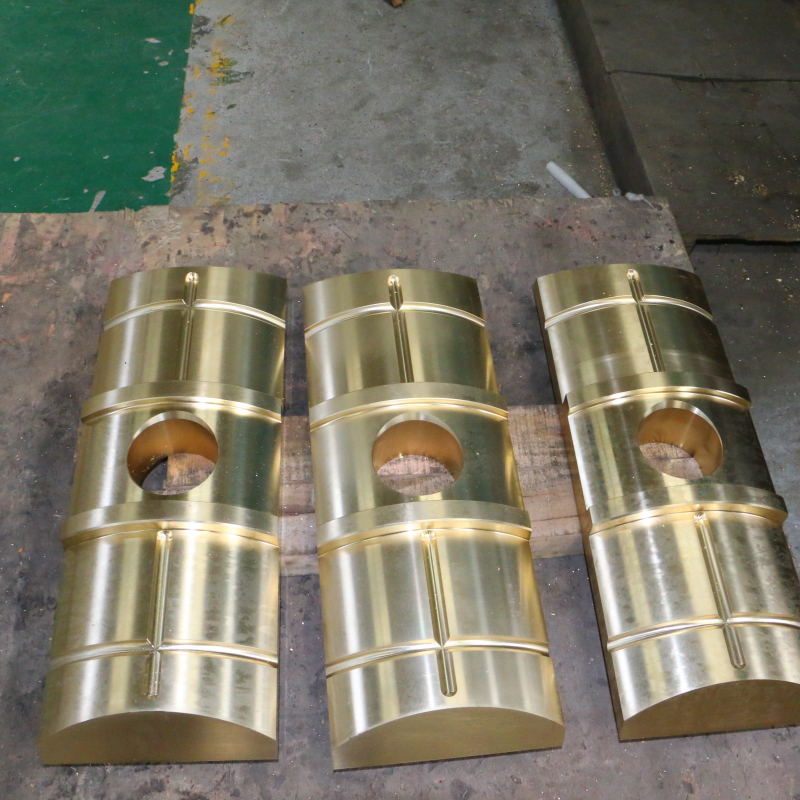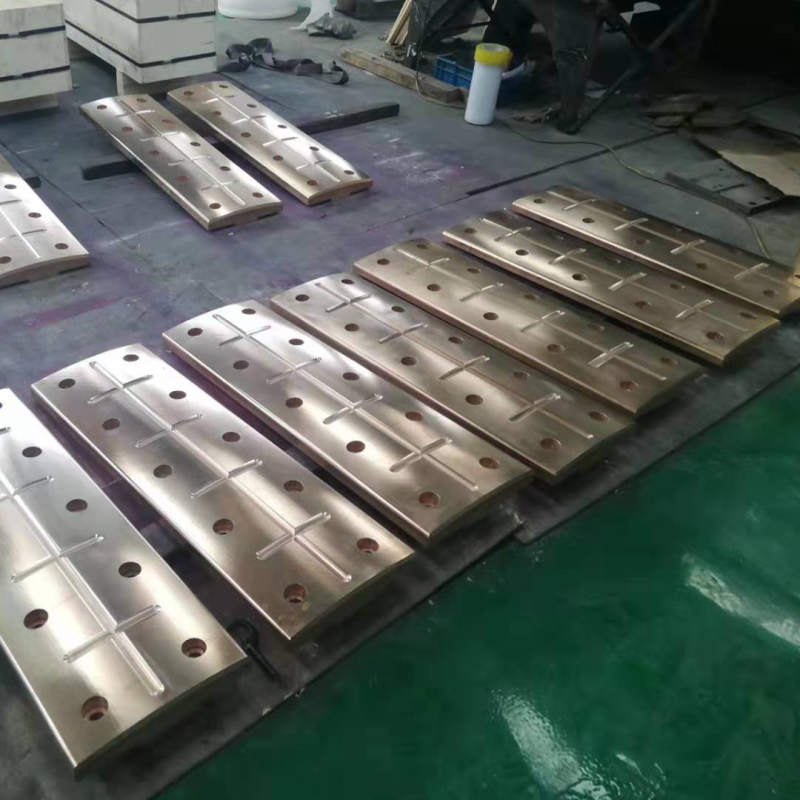The hardness of copper slide plate is affected by the following factors:
First, the material composition
Alloying elements: different alloying elements will have a significant impact on the hardness of copper skateboards. For example, the addition of tin, zinc, aluminum and other elements to form bronze, brass and other copper alloys, its hardness is usually higher than pure copper.
The content of alloying elements is also critical. Generally speaking, with the increase in the content of alloying elements, the hardness will be increased accordingly, but when the content exceeds a certain limit, it may lead to the decline of other properties, such as the reduction of toughness, brittleness increased.
Impurity content: impurity elements in copper, such as iron, lead, bismuth, etc., will affect the hardness of copper slide plate. A small amount of impurities may cause a slight increase in hardness, but too many impurities will reduce the performance and quality of the material.

Second, processing technology
Cold working: cold working such as cold rolling, cold drawing, etc. can significantly improve the hardness of copper slide. In the cold working process, the metal crystals undergo plastic deformation, the grain is elongated, broken, dislocation density increases, so that the hardness of the material increases.
The larger the amount of cold working deformation, the more obvious the increase in hardness. However, excessive cold working may cause the material to become brittle and reduce toughness.
Thermal processing: thermal processing such as hot rolling, hot forging, etc. will also have an impact on the hardness of copper slide plate. Appropriate hot working can eliminate the internal stress produced by cold working, improve the organization of the material, improve the hardness and strength.
However, if the hot working temperature is too high or too long, it may lead to grain growth, so that the hardness is reduced.
Heat treatment: heat treatment is one of the important means to change the hardness of copper slide plate. Through different heat treatment processes, such as annealing, quenching, tempering, etc., the organizational structure and properties of the material can be adjusted.
Annealing can reduce the hardness and improve the toughness; quenching can significantly improve the hardness, but at the same time will make the material brittle; tempering can reduce the brittleness of the quenching to a certain extent, while maintaining a high hardness.

Third, the use of the environment
Temperature: temperature has an important effect on the hardness of copper slide plate. Generally speaking, as the temperature rises, the hardness of copper will gradually decrease. This is because at high temperatures, the thermal movement of metal atoms intensifies and the crystal structure becomes unstable, resulting in a decrease in hardness.
Different copper alloys have different hardness trends at different temperatures. Some special copper alloys may have better high temperature hardness properties.
Corrosive environment: In corrosive environments, copper skateboards may undergo corrosive reactions, resulting in surface damage and reduced hardness. For example, in humid air, copper will react with oxygen and moisture to produce copper green, which will affect the hardness.
Some special corrosive environments, such as acid, alkali, salt solution, etc., the corrosive effect on the copper slide plate is more obvious, which will accelerate the decline in hardness.
In summary, the hardness of the copper slide plate is affected by a variety of factors such as material composition, processing technology and use of the environment. In practical application, according to the specific requirements of use, need to choose the appropriate copper alloy materials and processing technology, to ensure that the copper slide plate has good hardness and performance.
| Previous:What is the difference between a thrust bearing and a slide bearing? | Next:What is the experimental principle of the coefficient of friction meter to measure a copper slide? |




 Copyright © 2022
Copyright © 2022